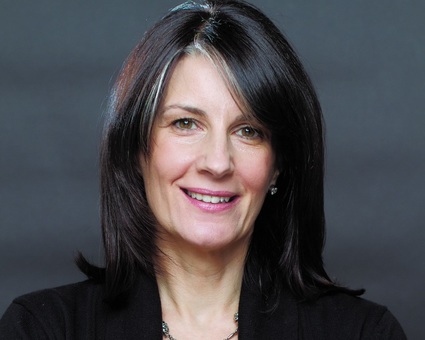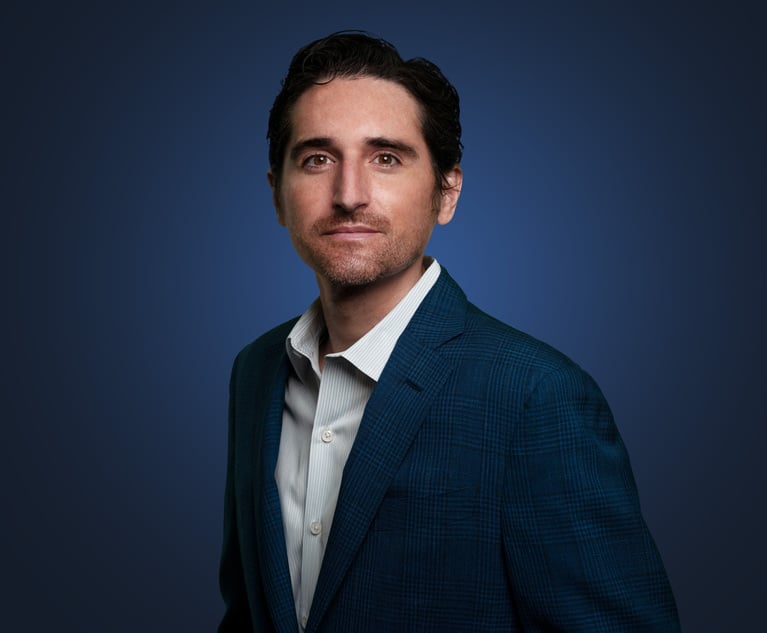Looking Back to Move Forward: Five Steps for Marketing Success in 2018
In the glow of the “fresh start” that a new year promises, a list of resolutions seems like a great idea. But resolutions are often under-defined or overly general intentions–bring in more new clients, grow my book of business 10 percent–rather than specific or well thought-out strategies or objectives. And as good as good intentions are, they're often too vague to be actionable or not based in what is actually going on in your firm.
January 02, 2018 at 11:21 AM
6 minute read

So, how did 2017 go for you?
Last year at this time, I wrote about ditching New Year's resolutions for your marketing and business development in favor of building good habits.
In the glow of the “fresh start” that a new year promises, a list of resolutions seems like a great idea. But resolutions are often under-defined or overly general intentions–bring in more new clients, grow my book of business 10 percent–rather than specific or well thought-out strategies or objectives. And as good as good intentions are, they're often too vague to be actionable or not based in what is actually going on in your firm.
That's also why many marketing plans fail to achieve the results you want–all (good) intention, no strategy or follow-through. On the other hand, good marketing habits, practiced over the course of the year, do succeed, generating real, measurable results.
So how did you do with the five good marketing habits I recommended for 2017?
The “identify your objectives” habit. The end of the calendar (or fiscal year) is a great time to identify your marketing or business development successes and failures (because we all have them), and reevaluate your objectives going forward.
What were your biggest and best successes in 2017–and how did you achieve them? Did your clients, lawyers, professionals and staff rave about anything this year?
Dig deeper into that RFP win, successful event or new client that you landed. Were they in line with the objectives that you set last year at this time. If they were, congratulations–and keep up the good work. Consider who and what made those successes possible and how you can replicate them in the New Year.
If there weren't in line with your stated objectives, consider how these successes should shape this year's objectives. Do they indicate an emerging area of opportunity for you to pursue, or were they one-off events that don't require a change of focus or direction?
The alignment habit. How well did you align your marketing strategy with your objectives this year? As I noted last month, you need both “Big S” strategy–your overarching, brand-driven strategy–and “small s” strategy–your plan for executing on your Big S strategy. Both should be aligned with your objectives. On a micro level, the alignment habit means that you evaluate every single marketing opportunity to see whether it fits your strategies and your larger objectives. Does this opportunity put you in front of people in your target audience or people who influence them? Does it showcase your experience or help you gain an entry into a new practice area? Is it likely to give you a good return on the time and resources that you have to invest?
The leverage habit. Did you get all the mileage you could out of every piece of content you created? Did you leverage every marketing opportunity to the max? Were you efficient in your content creation–repurposing or repackaging good content for other platforms and uses–or did you waste a lot of time “reinventing the wheel” and creating new content for each platform. Or worse, did you stick to one form of communication and ignore the rest?
The leverage habit is really simple. All it takes is 20 or 30 minutes to do a few things every time you write or speak on a topic: Post a link to the content to your firm's website, add it to your bio, email it to appropriate clients and others in your network, send it to appropriate media contacts, post content on LinkedIn and use it on social media, and consider how you can repurpose or repackage for another opportunity.
The better bio habit. I've said it before, and I'll say it (over and over) again. Clients and prospects view lawyer bios as the most important pages on a firm's website. Yet most lawyers fail to keep their bios up to date, going months–even years–without looking at their bio. Fess up: how many times did you review your bio this year? Does it list your publications, speaking events, representative matters, awards and honors? Is it accurate and up date? Regular review of your bio is much easier than a wholesale rewrite at the last minute when you need your bio for a pitch, RFP or presentation.
The “get out from behind your desk” habit. How much time did you spend working on your practice – rather than in your practice–this year? It's hard–but so important–to take time away from paying client work for marketing and business development. In today's hyper-competitive market lawyers need to stay visible and “top of mind” with target clients. If you want a steady pipeline of work, you have get out from behind your desk and engage with the larger world.
Spending only 15 minutes a day connecting with your network and engaging in larger conversation with your clients and colleagues can reap big rewards. Instead of working through lunch at your desk every day, consider taking a “working” lunch (or breakfast, coffee or drinks, whatever works for you) to network.
While writing and speaking take up a lot more than 15 minutes a day, they can reap enormous benefits. In surveys with in-house counsel, BTI Consulting found that clients see educational opportunities–client-focused CLEs and other (nonsales) presentations–as one of the highest-value services their lawyers can provide.
Don't wait until the confetti hits the floor to undertake your review of 2017. The sooner you examine what worked–and what didn't–over the past year, the sooner you can start implementing those essential habits for a successful and prosperous 2018.
Meg Charendoff, the principal of CREATE: Communications—Media—Marketing, is a lawyer, writer and marketing professional who works with law firms and lawyers to develop compelling content for their marketing and business development. She can be reached at [email protected] or 215-514-3206.
This content has been archived. It is available through our partners, LexisNexis® and Bloomberg Law.
To view this content, please continue to their sites.
Not a Lexis Subscriber?
Subscribe Now
Not a Bloomberg Law Subscriber?
Subscribe Now
NOT FOR REPRINT
© 2025 ALM Global, LLC, All Rights Reserved. Request academic re-use from www.copyright.com. All other uses, submit a request to [email protected]. For more information visit Asset & Logo Licensing.
You Might Like
View All
AI and Social Media Fakes: Are You Protecting Your Brand?

Neighboring States Have Either Passed or Proposed Climate Superfund Laws—Is Pennsylvania Next?
7 minute read
Seven Rules of the Road for Managing Referrals To/From Other Attorneys, Part 2
6 minute readTrending Stories
- 1Some Thoughts on What It Takes to Connect With Millennial Jurors
- 2Artificial Wisdom or Automated Folly? Practical Considerations for Arbitration Practitioners to Address the AI Conundrum
- 3The New Global M&A Kings All Have Something in Common
- 4Big Law Aims to Make DEI Less Divisive in Trump's Second Term
- 5Public Notices/Calendars
Who Got The Work
J. Brugh Lower of Gibbons has entered an appearance for industrial equipment supplier Devco Corporation in a pending trademark infringement lawsuit. The suit, accusing the defendant of selling knock-off Graco products, was filed Dec. 18 in New Jersey District Court by Rivkin Radler on behalf of Graco Inc. and Graco Minnesota. The case, assigned to U.S. District Judge Zahid N. Quraishi, is 3:24-cv-11294, Graco Inc. et al v. Devco Corporation.
Who Got The Work
Rebecca Maller-Stein and Kent A. Yalowitz of Arnold & Porter Kaye Scholer have entered their appearances for Hanaco Venture Capital and its executives, Lior Prosor and David Frankel, in a pending securities lawsuit. The action, filed on Dec. 24 in New York Southern District Court by Zell, Aron & Co. on behalf of Goldeneye Advisors, accuses the defendants of negligently and fraudulently managing the plaintiff's $1 million investment. The case, assigned to U.S. District Judge Vernon S. Broderick, is 1:24-cv-09918, Goldeneye Advisors, LLC v. Hanaco Venture Capital, Ltd. et al.
Who Got The Work
Attorneys from A&O Shearman has stepped in as defense counsel for Toronto-Dominion Bank and other defendants in a pending securities class action. The suit, filed Dec. 11 in New York Southern District Court by Bleichmar Fonti & Auld, accuses the defendants of concealing the bank's 'pervasive' deficiencies in regards to its compliance with the Bank Secrecy Act and the quality of its anti-money laundering controls. The case, assigned to U.S. District Judge Arun Subramanian, is 1:24-cv-09445, Gonzalez v. The Toronto-Dominion Bank et al.
Who Got The Work
Crown Castle International, a Pennsylvania company providing shared communications infrastructure, has turned to Luke D. Wolf of Gordon Rees Scully Mansukhani to fend off a pending breach-of-contract lawsuit. The court action, filed Nov. 25 in Michigan Eastern District Court by Hooper Hathaway PC on behalf of The Town Residences LLC, accuses Crown Castle of failing to transfer approximately $30,000 in utility payments from T-Mobile in breach of a roof-top lease and assignment agreement. The case, assigned to U.S. District Judge Susan K. Declercq, is 2:24-cv-13131, The Town Residences LLC v. T-Mobile US, Inc. et al.
Who Got The Work
Wilfred P. Coronato and Daniel M. Schwartz of McCarter & English have stepped in as defense counsel to Electrolux Home Products Inc. in a pending product liability lawsuit. The court action, filed Nov. 26 in New York Eastern District Court by Poulos Lopiccolo PC and Nagel Rice LLP on behalf of David Stern, alleges that the defendant's refrigerators’ drawers and shelving repeatedly break and fall apart within months after purchase. The case, assigned to U.S. District Judge Joan M. Azrack, is 2:24-cv-08204, Stern v. Electrolux Home Products, Inc.
Featured Firms
Law Offices of Gary Martin Hays & Associates, P.C.
(470) 294-1674
Law Offices of Mark E. Salomone
(857) 444-6468
Smith & Hassler
(713) 739-1250






